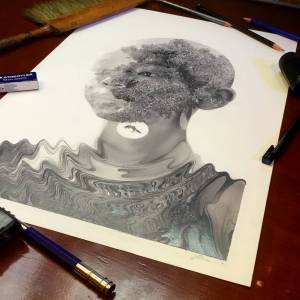
The work we do stands on two essential legs: The craft of our work and the concept behind it. Craft without concept is just an esthetic exercise in your skillset, concept with weak or absent craftsmanship is at best an unanchored idea, at worst a disappointment. And while this is completely, hilariously obvious, we are often rewarded in art by our craftsmanship more than by our concept. That’s neither here nor there, but the effect can be to lean more ferociously towards attending to the craft leg of our work and neglect the conceptual side. We might be able to get away with making a beautifully rendered painting of Paul Atreides, but if it doesn’t tell us about who he is as a character, or reveal something perhaps unknown to us before, it’s just a pretty picture of a young dude with blue eyes. For all the power and provocation of our craft, art lives in our concepts, and so does meaning and a lasting impact. Think of it in physical terms- you exercise and tone your body, be sure to as well give the same attention to your heart and mind. The body may get you to a place, but its mind/heart that set the course.
Admirer’s of art and our own love of each other’s work can only be experienced through that evidence of our art making and our craft, that remnant of the act of our working. It’s so basic to what we do we can confuse it for the work itself, when it is in fact, the result only of it. Abstract Expressionists were firm in the notion through their ideas of “Action Painting” that the act of creating the work was where the art lied, and that the finished canvas was merely the evidence of its passing. It’s largely what fueled their disinterest in premium high end and archival materials, (well that and a common sense of certainty everything would get nuked by the USSR before the 1980’s struck). A pollack is a picture of a Pollack no matter how authentic. Only a reflection. Like a photograph, no matter how accurate can only ever be the physical representative of the subject in the picture as it passed through this moment in time and changed the way light moved around it, our own work is that as well… but for us the light in our case is our ideas and imaginations. That’s where we should exercise ourselves the most, and that is where our careers live long and grow. Not in thew hands or the work that covers a novel or hangs in a gallery, but in the place where the work derives. That’s the muscle we should exercise the most, and give most of our time to.
The drafting skills the figure drawing classes, all the paint and color theory, it’s all essential and should not be forgotten- it’s the vocabulary a writer uses to tell a story. The words and poetry, alliteration and flow of language that is at its best when it is also honed and learned as best as it can be. So many students and newcomers to the art life come from a stance of technical skills as the highest priority, and I understand why that is. As I said above, it’s what we get complimented on more than any other aspect of what we do. It’s in those marks that our conceptual work lives and expresses itself. It’s not wrong of course. It’s a deep truth of our work, but it’s easy to get seduced by it as the only thing to focus on. Flowery words saying nothing can still sound lie poetry, however empty. A profound truth however, uttered in guttural grunts can cut far deeper, and impact us far more.
The ability to draw well is an important tool for our trade, but it is merely a tool of our trade, rather than its engine. The challenge of solving a problem, of finding a visual expression of a story for its book cover, especially when that story has no visual cues nor centerpiece to hang the image on, is persistently my greatest challenge in this thing I do along with you all. It’s what I love the most about the work, but also what I rage most against while doing it. It’s terrifying to not have it right away, to have to find it and seek it out either through endless drafts sketches or rejected versions from your AD. It’s the axis upon which we all pin downward to doubt our ability to continue, and where my personal sense of fraud lives, staring back at me laughing. My doubts live in that arena and that’s why I think it’s most important to spend as much time there dancing with that self recrimination and keep it chained and small while I work.
Take time to work the conceptual side of your work. make a bad drawing of a good idea, and then rework that drawing to meet the moment the idea promises. That’s where the future of your best work will grow from. It’s not a two way street, the craft won’t have the same effect on concept as concept will to your craft. In my experience when craft leads the way, the concept range shrinks to fit the execution. If you lead with your ideas, the way in which to bring them about comes from a wider pool and can even create new and unexpected leaps into new media, and experimentation out of which new directions and advancement comes. The execution should always be the horse and the concept the rider. It’s what will make you a better artist, and one who changes over time and grows with and reflects their time, rather than being a fixed point that eventually makes you out of step with the market and reduced to being the one artist that does this one exact thing only. That’s a hard trap to climb out of.
The other negative side effect is your own boredom with yourself. That’s the worst possible outcome, and what can kill it all if you’re not careful. Every job I took and executed that was solely about either following a brief I didn’t believe in, or was a mere exercise in some technique I’ve used a million times before, was in its end, dull because I was bored while working on it. Your art won’t lie for you- that boredom will impregnate every stroke and mark. There will be little light reflected back from the empty gaze of your piece. A Frankenstein’s monster lacking electricity.
While we’re paddling through the roil of our careers, stop and remember to challenge your idea of what your ideas are. Get out of the smooth and dive into the rough of yourself. Challenge your notions, and put the weirdest of them forward. If you’re presenting concept sketches, hold back the conventional approach and see first if the freaky gets recognized. They don’t always and failing your first thrust and parry, your more standard backup players can come in to keep you to the job. I find about seventy percent of the time the fallback to normal isn’t necessary and even if the client requires something more familiar and basic or simply doesn’t grok your conceptual approach to a project, having tried for it can fuel you through executing something more conventional without falling into the gray void of the dull. There’s usually a place to sneak in some of your conceptual weirdness and higher minded concepts even within the confines of a conventional piece. Revolution never knocks not he front door if it seeks entry to the palace. it sneaks in the back, through the sewers, storms throughout he windows, shimmies down the chimneys. When you find yourself spending too much time producing the same work, or the same type of work, make yourself do something different. Sabotage your oil paint habit with ballpoint pens or crayons, make sculpture where drawing usually lies. Draw with your left hand. Whatever it is, put yourself in jeopardy and uncertainty, if only long enough to trigger the panic to get out from it. Concept lives there, in those moments, thrives and grows there. Grow with it, and you’ll find the craftsmanship will be forced to follow. Remember at the end, who is the horse and who is the rider.




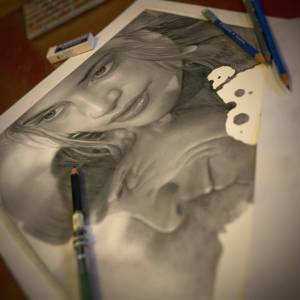

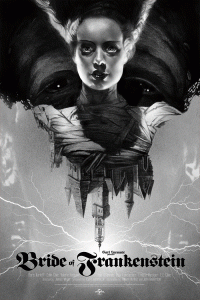

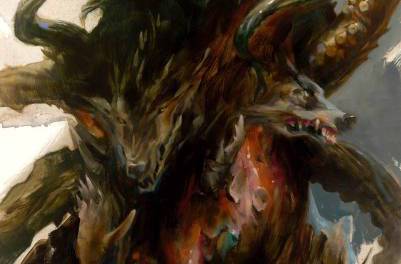
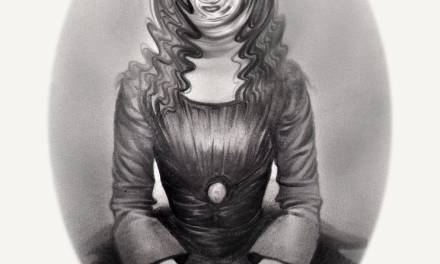

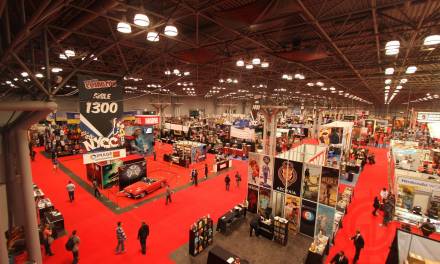

Well said, this really spoke to me!
So glad to hear it. Thank you.
Stupendous essay.
I remember when I thought stupendous meant stupid.
Hah- well I suppose we’re all of us both, on any given day.
A really thoughtful, inspiring piece. I have much to learn, but it’s good to have these guideposts.
We all do, just keep hammering away like the rest of us. Glad the post spoke to you. Thank you.